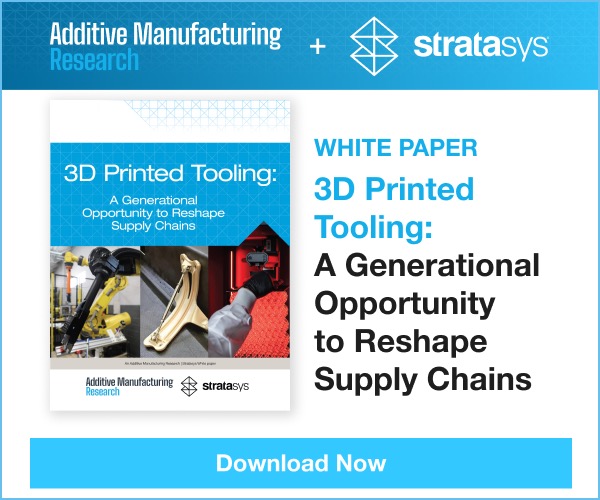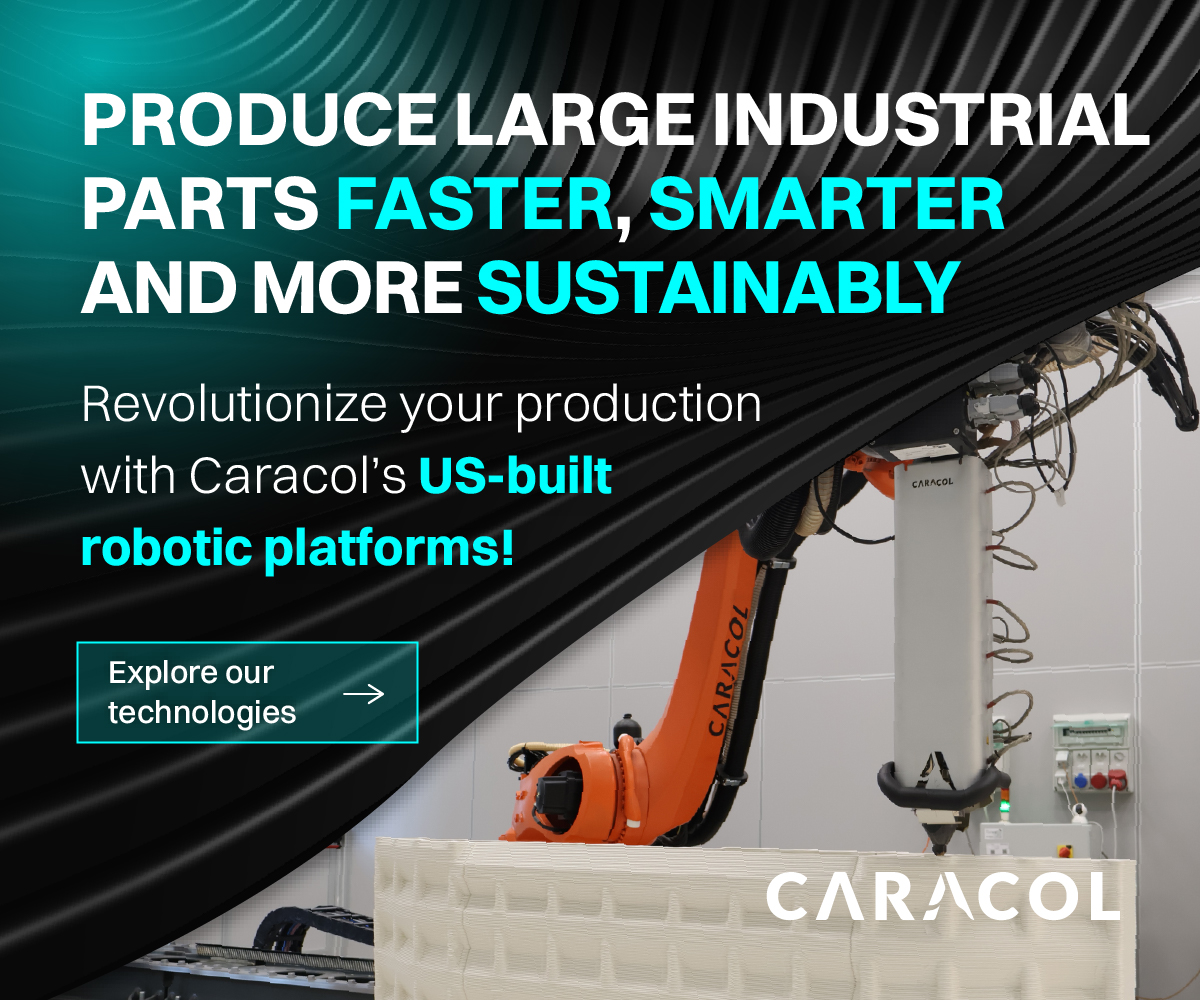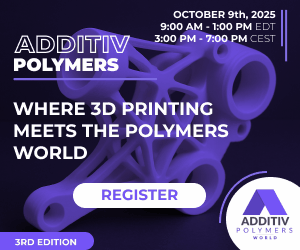
Additive manufacturing equipment, such as these machines seen at the University of Nottingham during the AM Conference, require significant upfront investment
One of the major advantages of 3D printing often touted in marketing literature is its cost-cutting capability as compared to traditional manufacturing techniques. As material is built up in additive manufacturing, rather than cut away through subtractive techniques, materials savings can be substantial as only the necessary amount is processed for a given component. Especially when working with high-value materials, this can be a significant benefit to businesses. Rapid prototyping remains a key use for 3D printing, as quickly iterating a design can significantly speed time to market, cutting both time and money in product development efforts. As with any new hardware adopted in manufacturing, though, of course those savings have to be worked out against the entire lifetime cost structure, and the return on investment (ROI) must be calculated prior to any large investment to ensure that purchasing a new machine will be a worthwhile expenditure. Even when the numbers are there, though, it can still be difficult to justify the cost of a technology as new as additive manufacturing to those holding the purse strings. After all, it takes money to make (or 3D print) money.
Financing was one of the major barriers to entry in the 3D printing industry under examination at this month’s International Conference on 3D Printing and Additive Manufacturing in Nottingham. Expert presenters across a variety of industries and research disciplines addressed concerns including financing, the skills shortage, standards/regulations, and physical properties when looking into the business of additive manufacturing. These barriers can be daunting for businesses looking to adopt the technology for use.
Financing came up relatively frequently through the course of the Industrial Realities of 3D Printing pre-conference event and two days of the full AM Conference agenda, and several speakers went more in-depth regarding this matter. Presenting specifically a session regarding cost/investment/financing was Richard Hill of National Westminster Bank (NatWest), who leads a dedicated work group focusing on several objectives regarding the adoption of additive manufacturing. As he detailed them, these include:
- Establish effective communication channels between AM industry and key stakeholders in financial services and business advisory sectors
- Increase rate of investment in AM through bespoke funding applications and creation of investment case support
- Promotion of AM successes involving funding and/or investment support
“There’s already enormous success out there; how many stakeholders… know what’s working and what’s working well?” Hill asked as he discussed these goals. “That builds confidence and confidence is absolutely critical to the success of this industry. We put a lot of thought into these objectives and haven’t changed them much since the beginning. We think about the stakeholders and what they need to know.”
The work group, with participants coming from major UK banks, universities, and additive manufacturing businesses, identified several key challenges as barriers to adoption for technology funding. They include among these:
- Limited knowledge and capability re AM within finance community
- Potential market failures
- Inadequate provision of investment cases
- Weak AM equipment aftermarket infrastructure
- Weak investment confidence
“To get a message out to a wider audience than your community, finance is a good conduit to that — this also helps to educate how people will go out and do that, with practical guides,” Hill explained. “We must develop AM investment case studies — how wide are these success cases known? Getting that message out to others seems pretty important to supporting motivation for the sector.”
Diving into use cases and the impact of investment on industry, Sophie Jones of Added Scientific, who is also part of Hill’s working group, discussed entrepreneurship in the UK’s additive manufacturing industry. Looking particularly at small- and medium-sized enterprises (SMEs), Jones referred to a thorough interview series conducted with six companies: 3DPRINTUK, Croft AM, Attenborough Dental, HiETA, M Di Vito, Metron. She noted that in many cases, these companies saw “high personal risks taken to purchase machines.”
“One of the most galling cases was 3DPRINTUK, which used family funds to purchase SLS machines because they simply couldn’t get access to financing,” Jones said, noting that back-up revenue streams are required for many of these businesses to support their work in 3D printing.
The AM market, she explained, is perceived as being high risk. Some of the companies she spoke with noted that without their other operations they would not be able to undertake any work in additive manufacturing, and that some indeed do not disclose their manufacturing method to customers due to perceptions of additive manufacturing as only a plastic desktop prototyping technology. Because the industry’s reputation is unproven and unestablished, there exists a need to educate customers — and investors.
“If you can’t do additive manufacturing very soon you won’t be able to do high-value manufacturing,” Robin Wilson, Deputy Head of Manufacturing, Innovate UK, bluntly said in his presentation on industrial strategy.
Positioning additive manufacturing in the context of an industrial strategy, Wilson noted that funding in 3D printing comes both from public sources and from industry, and is expanding with the industry.
“Innovation doesn’t just happen,” Wilson said, “it needs collaboration, it needs cooperation. It is a consequence of coordinated collaboration between business, government, and research.”
Representing Innovate UK, Wilson clearly focused on the business structure of the United Kingdom in his presentation, though many of his observations are universally applicable. The Innovate UK annual budget is rising healthily, and from April 2018 the organization will shift structure to become UK Research and Innovation, under CEO Designate Sir Mark Walport. This move is intended to provide what Wilson described as a means for their team to become more effective at translating research to commercial success. The gap between academia and industry is a well-known one, and bridging it can bring proofs of concept into the market at large, potentially expanding on the benefits of technological development; it’s the how that often provides the hiccup, and therein often lies a financial concern as investment can be tough to come by depending on market conditions and sentiment.
“I was overwhelmed by the ‘can do’ attitude in the States,” Wilson said, having attended RAPID + TCT 2017 two months prior in Pittsburgh, which played host to the largest annual additive manufacturing-focused trade show in North America, a notably different sort of industry gathering than the AM Conference.
“If we want to be more effective in pulling research from academia, and commercializing it, we need to be more okay with failures. British culture is more hesitant to fail, especially compared to the US, where they are more willing to take a risk.”
Wilson cited forecasts, including the Wohlers Report, which have been fairly bullish overall, even with some slowdown observed for 2017.
“Actually this is a bit more difficult than we thought it was, to get AM out there and into large-scale widespread adoption,” Wilson continued. “We are absolutely not giving up on this but trying to make sure our funding is focused on what businesses need to make this significant. Whatever the forecast may be, it is growing and it is significant.”
 He noted that additive manufacturing is a good strategic fit for the UK’s strengths and priorities, and that they are seeing increasing public and private investment in AM. This in turn comes back to how to continue to perpetuate and support growth through the National Strategy for AM. The strategy was created in response to challenges that companies investing in additive manufacturing today are facing, including access to finance. In keeping up with similar strategies — he noted other countries that provide national coordination and focused support including the US, South Korea, and Japan — the UK has some work to do to become a better fit business environment for adoption of additive manufacturing to truly pick up. The team behind the strategy are “very keen” to ensure publication of their efforts over the last three years in developing this national document; publication is tentatively slated for September.
He noted that additive manufacturing is a good strategic fit for the UK’s strengths and priorities, and that they are seeing increasing public and private investment in AM. This in turn comes back to how to continue to perpetuate and support growth through the National Strategy for AM. The strategy was created in response to challenges that companies investing in additive manufacturing today are facing, including access to finance. In keeping up with similar strategies — he noted other countries that provide national coordination and focused support including the US, South Korea, and Japan — the UK has some work to do to become a better fit business environment for adoption of additive manufacturing to truly pick up. The team behind the strategy are “very keen” to ensure publication of their efforts over the last three years in developing this national document; publication is tentatively slated for September.
Among growth trends already underscored and noted for investment in additive manufacturing, Wilson pointed to a February 2016 report: “Mapping UK Research and Innovation in Additive Manufacturing.” The report, authored by three AM Conference speakers — Professor Richard Hague, Dr. Phil Reeves, and Sophie Jones — reviewed publicly funded R&D activities in national additive manufacturing between 2012 and 2015. It found that research funding nearly doubled during that timeframe, from £15 million to almost £30 million. Going forward, Wilson painted a picture of what future success would look like. Among the aspects of success is a bid into the Industrial Strategy Challenge Fund (ISCF), for about £150 million in funding for additive manufacturing.
“If it feels like technology push, we’ve probably got it wrong; if it feels like this technology is helping us solve a problem, and that problem is significant to the UK, we’ve probably got it right,” he said of the hopes for potential investment in 3D printing.
Wrapping up the pre-conference agenda was Professor Ken Young, of the Manufacturing Technology Centre (MTC), who spoke regarding the Industrial Challenge Strategy Fund, as he is Co-Chair of the Industrial Leadership Group for Additive Manufacturing, which is working on a bid for £225 million for the ISCF for the UK Additive Manufacturing Strategy. He pointed to a few key needs in the advancement of additive manufacturing technology, namely skills and collaboration, both of which are driven by investing into their growth.
While the UK can’t do all the push in digitally driven advances on its own, Young noted, skills represent “one of the biggest killers” in the digital manufacturing industry. The UK lacks in automation, he said, because “we don’t have the guys who know how to do it.” For this reason, the domestic industry has not grown further — but, he noted, “if the government is going to invest in a technology, it’s going to have to stay in the UK; we have to invest in those skills.” With domestic investment comes domestic growth as the industry becomes better equipped to grow.
“There’s an old saying: if you want to go fast, go alone, if you want to go far, go together. We’ve got to go far, so we’ve got to work together,” Young said. “Even if we get this funding, it’s three-year funding; we won’t solve this in three years. It’s a 10-to-15-year problem. There’s no way we can innovate without the skills to innovate.”
Coming back from a national perspective on investment to the individual business level was Pete Basiliere, Research Vice President in Additive Manufacturing, who presented Gartner‘s just-released 2017 Hype Curve. The Hype Cycle, a well-known depiction of the current state of many additive manufacturing technologies, is updated each year to present a picture of the reality of the technology today. Basiliere explained that there was some movement among technologies, including some additions, as 38 different 3D printing technologies were included for 2017.
“Two-thirds are to the far left, where you should be asking: do I care, should I be doing something,” he said, pointing to several of the young technologies still steeped in hype. “On the right is where the technology has matured.”
The Hype Cycle is often used as a comparative tool that gives a larger picture of the industry; it can also be used to make investment decisions when confronted with up-and-coming technologies. Basiliere pointed to several that had been hyped in the past — notably desktop extrusion-based methods around 2012, which were hyped well beyond their capabilities — and to some that are now facing some level of hype. As one example, he looked to Desktop Metal, which has recently seen some hype as major investments have led the young metal 3D printing operation to become the industry’s newest unicorn, valued at over $1 billion; this hype, though, has been nowhere near what we saw five years ago, as the industry has itself seen some level of maturation.
“The question to ask yourself is: what is here that I could be using or should be using?” Basiliere noted, pointing to the illustration. “That doesn’t mean you have to invest, but you have to be aware what is happening with that technology.”
Understanding a potential investment is obviously a critical part of any financial backing, and Gartner is among those seeking to offer a tool to help enhance that comprehension. Basiliere’s standard advice in 3D printing is to invest in outsourcing for the first pass, via a service bureau or similar. By doing this, he says, it shows that even if an operation is not yet willing to invest in the capital, the willingness to invest in the technology will contribute to growth, both for the business seeking these operations and for the industry itself. It’s important in this sense to understand the type of innovator your organization is, he explained, whether it’s more important to be a first adopter or confident in putting money into more tried-and-true systems.
 Whether from a business or a national perspective, the investment into a new technology is a major decision — and in the case of 3D printing, one that requires more facts and major efforts in education to make it more likely to be forthcoming. Additive manufacturing remains a young industry, and it yet has many barriers to overcome before it can begin to approach its potential in the grand scheme of manufacturing. As many at the AM Conference pointed out at the gathering of experts in Nottingham, these barriers are all addressable; they need to be understood, looked into, and have strategies developed to approach solutions on these fronts. We’ll continue to take a look at the business of adopting additive manufacturing in the near future.
Whether from a business or a national perspective, the investment into a new technology is a major decision — and in the case of 3D printing, one that requires more facts and major efforts in education to make it more likely to be forthcoming. Additive manufacturing remains a young industry, and it yet has many barriers to overcome before it can begin to approach its potential in the grand scheme of manufacturing. As many at the AM Conference pointed out at the gathering of experts in Nottingham, these barriers are all addressable; they need to be understood, looked into, and have strategies developed to approach solutions on these fronts. We’ll continue to take a look at the business of adopting additive manufacturing in the near future.
Share your thoughts in the Financing forum at 3DPB.com.
[All photos: Sarah Goehrke]
Subscribe to Our Email Newsletter
Stay up-to-date on all the latest news from the 3D printing industry and receive information and offers from third party vendors.
Print Services
Upload your 3D Models and get them printed quickly and efficiently.
You May Also Like
SwissTo12 Expands To Spain
I’m a huge SWISSto12 fan. The company is quickly expanding by using additive manufacturing to engineer better satellite Radio Frequency (RF) components. Satellite RF is one of the best applications...
3D Printing News Briefs, September 24, 2025: Survey, AM Curriculum, UHPC Rheology, & More
In today’s 3D Printing News Briefs, we’ll get things started with a comprehensive post-processing survey by PostProcess Technologies. Jacksonville State University is partnering with EOS Additive Minds to develop AM...
Let’s Make It Easier for People to Give Us Money
If you’re trying to sell expensive boxes, then the current market and global uncertainty will make this difficult for you. But, additionally, you are making it difficult for yourself as...
3D Printing News Briefs, September 17, 2025: IDEX Printer, NiTi Scaffolds, Cooking Oil, & More
In today’s 3D Printing News Briefs, Raise3D announced the launch of a new printer at FABTECH 2025, and EOS and AM Solutions share about their integrated post-processing ecosystem, first introduced...








































